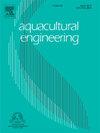Estimation of the fish number in farming cage from the fish finder echo images via machine learning
IF 3.6
2区 农林科学
Q2 AGRICULTURAL ENGINEERING
引用次数: 0
Abstract
Determining the precise number of farmed fish in a preserve is crucial, as it informs the quantity of feed required. However, especially for ocean-based preserves, this measurement poses a significant challenge. While a fish finder is useful for investigating the state of fish schools in the water, the clarity of the echo image is insufficient for individuals to count each fish. This study aims to address this issue by developing a novel method for fish counting, leveraging combined simulation and machine-learning techniques applied to the echo images from the fish finder. Two key innovations underpin our approach. First, we employ a convolutional neural network (CNN) to extract features from echo images with varying fish numbers to estimate the fish count from a portion of fish school images. Second, we generate virtual echo images via simulation to create a training dataset for the CNN. This step is necessary because CNN image classification requires a large number of images, and preparing such a vast collection of echo images with accurate labels through real-world fish finder observations in a fish preserve is time-consuming. We tested our method in six farming cages housing yellowtail (Seriola quinqueradiata). Our method could estimate the fish count with errors ranging from −0.86 % to 6.89 %. While our method requires further refinement, the results suggest the potential for a new fish-counting system.
求助全文
约1分钟内获得全文
求助全文
来源期刊

Aquacultural Engineering
农林科学-农业工程
CiteScore
8.60
自引率
10.00%
发文量
63
审稿时长
>24 weeks
期刊介绍:
Aquacultural Engineering is concerned with the design and development of effective aquacultural systems for marine and freshwater facilities. The journal aims to apply the knowledge gained from basic research which potentially can be translated into commercial operations.
Problems of scale-up and application of research data involve many parameters, both physical and biological, making it difficult to anticipate the interaction between the unit processes and the cultured animals. Aquacultural Engineering aims to develop this bioengineering interface for aquaculture and welcomes contributions in the following areas:
– Engineering and design of aquaculture facilities
– Engineering-based research studies
– Construction experience and techniques
– In-service experience, commissioning, operation
– Materials selection and their uses
– Quantification of biological data and constraints
 求助内容:
求助内容: 应助结果提醒方式:
应助结果提醒方式:


